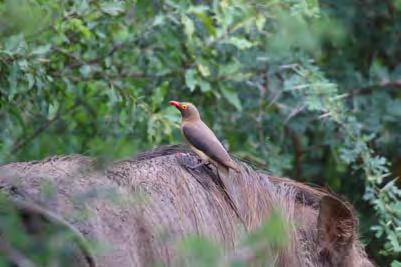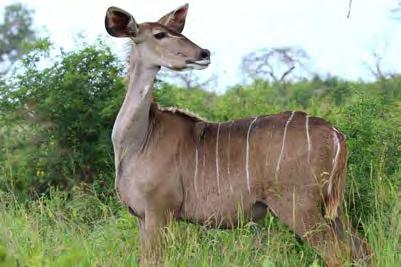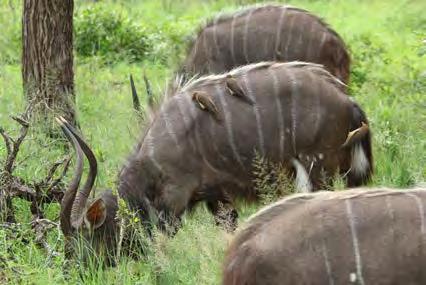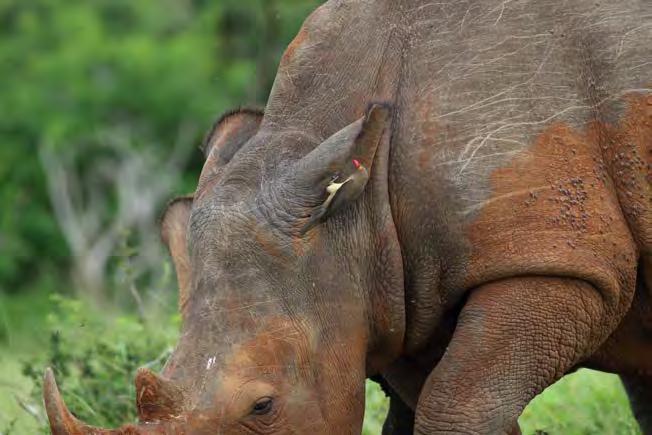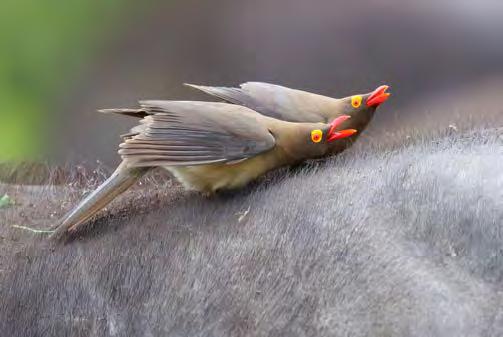
1 minute read
Something to peck about...
but also the large number of cattle combined with the more responsible use (or diminished use) of cattle dips to kill ticks. The previous use of arsenicbased dips was to blame for the near extermination of oxpeckers in South Africa.
During the last four years of our birding travels, we have been fortunate to encounter on several occasions members of one of the several bird families unique to Africa, namely the oxpeckers (Buphagidae). Sadly, we have not yet encountered Yellowbilled Oxpeckers, as our birding trips have not yet extended as far as the Kruger National Park, and, although they were reintroduced to the Umfolozi Game Reserve in 1986, they appear not to have survived.
Advertisement
They were not recorded in the “Bird Atlas of Natal” by Cyrus and Robson during the period 1970-1979, some records appear in the SABAP 1 records from Umfolozi and
Hluhluwe (1987-1992) post reintroduction, but the SABAP2 database has no records for KZN since its commencement in July 2007.
By contrast, the Red-billed Oxpecker is far more widespread, and indeed, appears to be increasing its range and numbers. It has been recorded in almost all provinces of South Africa, as far west as Cape Town, widely in the Addo Elephant National Park, and throughout KZN. We have a resident population in the Tala Game Reserve near Eston and have even recorded them in Durban from time to time. Their wide distribution could be due to many game farms in KZN,
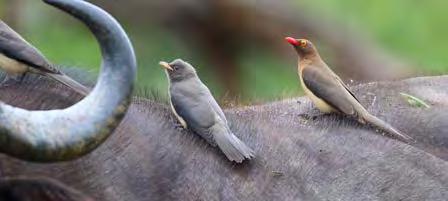
A wide variety of “host” mammals has been recorded, namely giraffe, kudu, sable, white and black rhino, Burchell’s zebra, Cape buffalo, impala and warthog, as well as domestic animals such as donkeys and cattle. Interestingly, elephant and waterbuck seem not to tolerate oxpeckers, and, despite seeing hundreds of elephant during our December 2022 Zululand holiday, we could not find any picture of an oxpecker on an elephant, nor any on blue wildebeest. However, we did manage to find pictures of Red-billed Oxpeckers on ten species of mammal, some of which are illustrated here.
The most frequent hosts appeared to be impala and giraffe, with buffalo also commonly used. There were a few instances of white rhinos, warthog or kudu being cleaned, and we did come across one nyala with oxpeckers, which is not mentioned in Roberts VII. We would welcome club members letting us know of any other mammals that they have seen oxpeckers on, especially if they have been photographed.
Text and photos Steve Davis
BirdLife eThekwini KZN | Conservation Co-ordinator Honorary President and KZN Honorary Recorder
